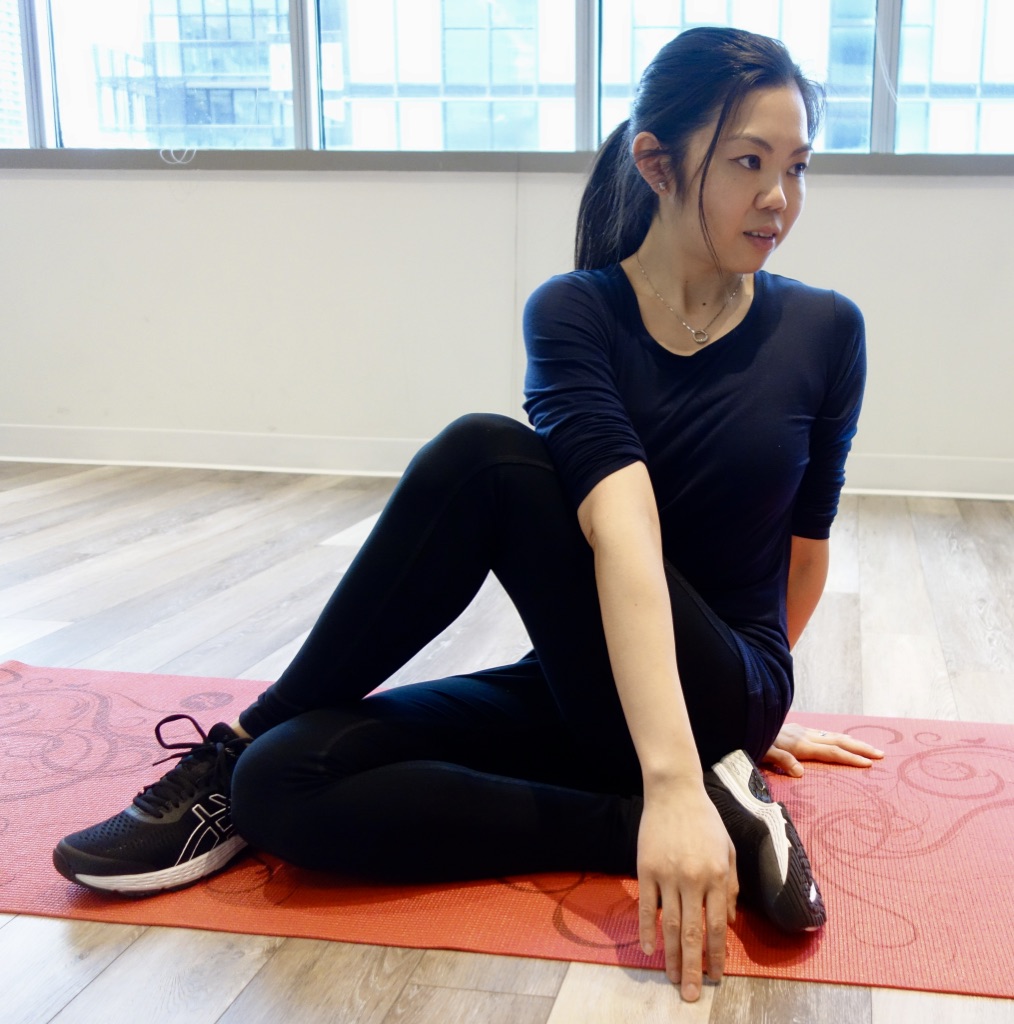If you are getting low back pain, the issue is probably due to a weak gluteus medius muscle.
Often times, we find ourselves sitting for long periods at work, people spend more than 9 hours a day sitting and when getting up from the desk we feel that ache in our low back or even our knees. This is because your gluteus medius is weak and underworked. When we don’t use these muscles often, they become shortened over time and lose their range of motion and proper function, this perpetuates the gluteus medius pain. By sitting on our butt all day, we prevent these muscles from firing and activating, thus leading to other problems in our bodies, such as back pain, hip pain and even knee pain. Yes, knee pain may also be affected due to the kinetic chain of movement in the lower limbs from the gluteus medius to the knee.

Actions of these important muscles:
The Gluteus Muscles play a vital role in stabilizing the pelvis and supporting the back.
Gluteus Maximus: Most superficial and largest of the 3 gluteus muscles.
- Action: Extension of the hip (brings your leg straight behind your body)
Gluteus Medius: The second largest of the 3 gluteus muscles, sandwiched between the gluteus maximus and gluteus minimus.
- Action: Abducts your leg to the side. (brings your leg straight to the side)
Gluteus Minimus: The smallest of the glute muscles, also the deepest.
- Action: Abduction of the leg. Same as gluteus medius.
What Do You Use Your Glutes For?
- Squatting
- Bending over to pick up things
- Getting up or sitting down on a chair
- Walking up and down the stairs
- Running, sprinting
- Agility with movements in activities
How Do My Glute Muscles Cause Lower Back Pain?

As mentioned above, the glute muscles are the main stabilizers in the pelvis and help support the lower back. When these muscles are weak, you overcompensate by using the muscles in your back to stabilize your body. This adds stress, pressure and tension to the low back, thus increasing the load on the spine, and creating gluteus medius pain and significant discomfort.
By activating and strengthening your gluteus maximus, gluteus medius and gluteus minimus muscles, you take part of the load off your back and provide a more balanced pelvis. It is important to engage these muscles often to prevent lower back pain, knee pain and specifically gluteus medius pain.
Stretch and strengthen your gluteus muscles and incorporate more movement into your daily routine. This will also help increase your performance and prevent other injuries.Try some of these exercises below, to help strengthen and stretch your gluteus muscles.

Skeletal and muscular representation of the lower back and gluteal muscles
Strengthening exercises:
Strengthening exercises to alleviate your gluteus medius pain and intern your back pain and possible knee pain.
CLAMSHELLS


Be sure to feel the activation of the gluteus muscles as you lift your knee, while keeping your feet together.
Lay on your side with knees bent and feet together.
- Open and close your knees.
- Do 3 sets of 15 reps on each side
FIRE HYDRANT

Target: strengthening the gluteus medius muscle

- Start on all fours, shoulders above wrists and knees directly below the hips.
- Bring one leg to the side, contracting the gluteal muscles of the butt.
- Do 3 sets of 12 reps on each side.
KICK BACKS

Target: the lower back by strengthening the gluteal muscles

- Start on all fours, shoulders above wrists and knees directly below the hips.
- Extend one leg to the back, hold for 5 seconds.
- Extend the other leg to the back, hold for 5 seconds.
- Do 3 sets, 12 reps each side.
Stretching positions:
Stretching is an important way to have the gluteus medius activated for more strengthen thus eliminating your gluteus medius pain and ultimately your back pain.
PRETZEL

This position targets the lower back pain, muscle pain in the glutes and the knee pain
- In a seated position, cross one leg over the other, both knees bent.
- If you cross your left leg over your right, twist your torso away from the left leg, looking towards the left.
- Keep your back straight and cross your right arm over the left tight.
- Twist in this position until you feel a stretch in your glutes and your low back.
- Hold for 30 seconds.
MODIFIED PRETZEL

- Lay on your back, take your right leg and cross it over the opposite knee.
- Bring both legs up in 90 degrees.
- Thread your hands between your legs and pull on the back of your left thigh and bring it closer to your chest.
- Hold for 30 seconds to 1 minute. Change legs, repeat 3 times.
Exercise and Manual Therapy
For many people, consistency with your exercises, may be a challenge, so consider working on these exercises with a physiotherapist or using your rest days to get a treatment from a massage therapist in Yonge and Eglinton.


